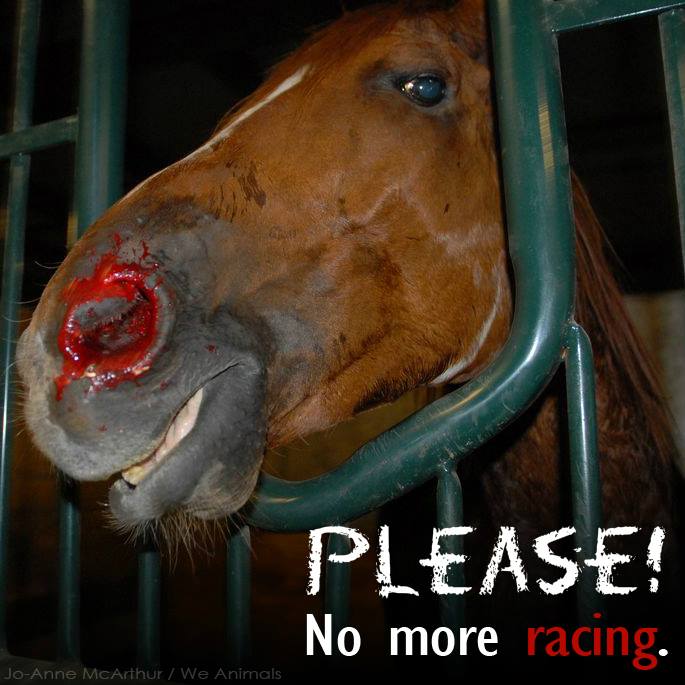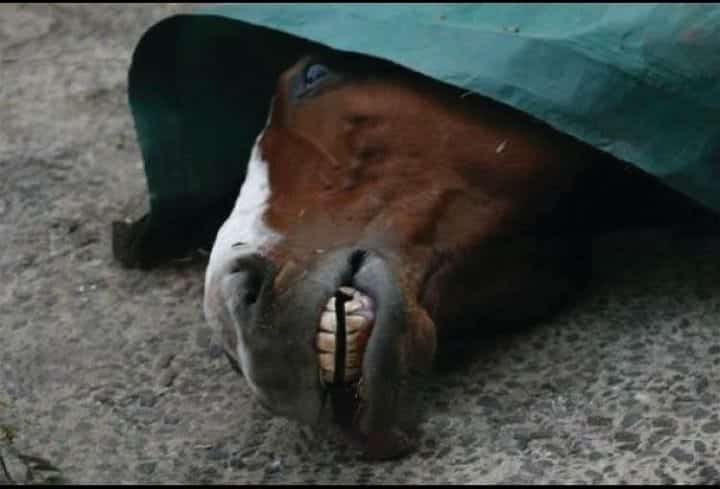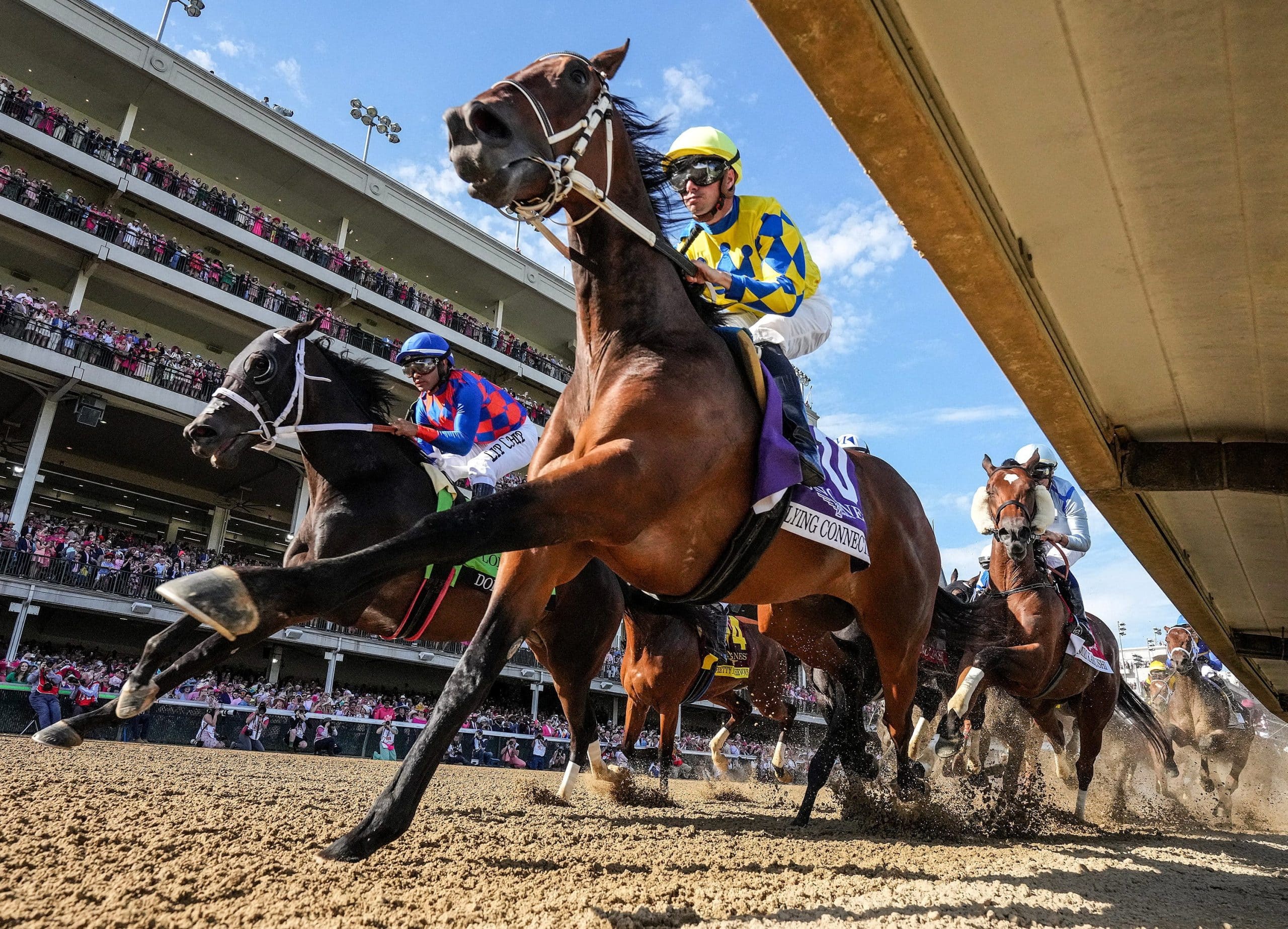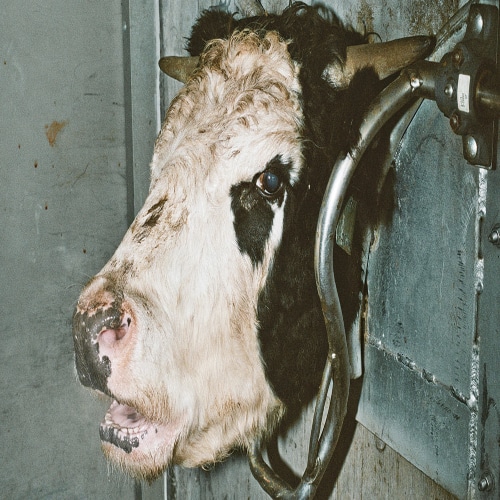Is Horse Racing Cruel and Unethical?
Horse Racing is a sport that has been cherished for centuries, with a rich history in tradition and excitement.
Still, the question remains: is horse racing cruel to horses or not? However, as with many long-standing traditions, it has come under scrutiny in recent years due to concerns about the treatment of the animals involved.
Whether horse racing is cruel has sparked a passionate ethical debate on various aspects of the industry, including horse welfare, injury rates, and the treatment of retired racehorses. Horses are beaten, drugged, and even treated so badly that they can’t even stand, and these are very common during races.
Moreover, there are so many other aspects that prove that this whole horse racing practice is not safe for the horses. We have mentioned so much information related to horse racing cruelty.
Let’s get started!
Overview: A Tradition of Horse Racing
Horse racing, a sport cherished for centuries, holds a special place in the history and culture of many societies worldwide. Beyond the excitement of competition, horse racing is a tradition rich in heritage, passion, and a unique blend of athleticism, artistry, and craftsmanship.
1. The Origins
The origins of horse racing can be traced back thousands of years to ancient civilizations. Horse racing was a prominent event in Greek, Roman, and Byzantine cultures, and chariot racing was a popular sport in the Roman Empire.
Thus, horse racing is not the sport of the modern world but has much history. Later, in the medieval period, knights and noblemen engaged in equestrian competitions, laying the groundwork for the sports we know today.
2. The Evolution
Horse racing has evolved significantly since its origin. The transition from chariot to mounted horse racing marked a pivotal moment in its history. In England, the 12th century saw the creation of the kiplingcotes Derby, believed to be the world’s oldest horse race still in existence today.
During the reign of King Charles II in the 17th century, horse racing became more organized with the establishment of the Newmarket Racecourse. This period also gave rise to the foundation of the Jockey Club. They also continued to regulate British racing to this day.
Furthermore, in the United States, horse racing played a significant role in the nation’s early history. The sport has been celebrated since the colonial era, and the Kentucky Derby, first held in 1875, has become one of the most prestigious horse racing events in the world.
Other prominent races like the Belmont Stakes and the Preakness Stakes complete the Triple Crown.
3. Global Traditions

Horse racing is a global tradition with unique regional flavors and customs. In the United Arab Emirates, the Dubai World Cup showcases luxury and modernity.
In Australia, the Melbourne Cup is the “race that stops a nation,” while the Grand National in the United Kingdom is a test of endurance and courage. From the Japan Cup to the Prix de I’Arc de Triomphe in France, each region brings its essence to the tradition of horse racing.
4. The Bond Between Horse and Rider
Horse racing is not only about the horse’s speed and athleticism but also about the partnership between horse and jockey. The bond between the two is vital for success.
Jockeys spend countless hours training and forming connections with their mounts. This relationship adds an element of trust, camaraderie, and mutual respect to the sport.
5. The Spectacle and Fan Base
Horse racing is a spectacle like no other. The pageantry, the colorful silks, the thundering hooves, and the electrifying atmosphere of the racecourse draw millions of spectators worldwide.
It’s not just about the sport; it’s about the social event and the sense of community that it creates. From the Derby Day Fashion in the UK to the tailgating and traditions of the Kentucky Derby, horse racing events offer much more than just horse races.
Why is Horse Racing Cruel?
Is horse racing cruel or not? One should not be skeptical about this issue as there are several reasons to justify this statement.
Below are seven reasons made by experts who believe that horse racing can be a cruel sport.
1. Physical Strain

This sport requires a lot of energy and strength from horses and riders. However, horses need to be overqualified to play this sport. Thus, one of the primary concerns raised by critics of horse racing is the physical strain imposed on the animals.
Moreover, racehorses are pushed to their limits regarding speed and stamina. The rigorous training and competition can lead to injuries, stress, and exhaustion, potentially compromising the horses’ health and well-being.
This also causes early death in several horses as they do not have enough energy to survive for longer years.
2. High Injury Rates

Horse racing has a notable injury rate, and the risk of accidents is a significant concern. Horses, often bred for speed, are subjected to intense training and racing schedules.
Critics argue that the desire for victory often takes precedence over the horses’ safety, resulting in frequent injuries that can be fatal or career-ending. Also, once the horses are not able to run or walk, their owners no longer need them, and it eventually leads to their death.
Thus, whether horse racing is cruel or not can be decided easily.
3. Medication Use
The use of medications, including performance-enhancing drugs and painkillers, is a contentious issue in horse racing. This is also because it is exploitation of the horses to increase their performance during the races.
Critics assert that the widespread use of these substances can mask injuries, allowing horses to compete when they should be resting or recovering. This, they argue, contributes to the high injury rate and is detrimental to the horses’ well-being.
4. Whipping and Spurs

The use of whips and spurs in horse racing has been criticized for its potential to cause physical pain and distress to the animals. While regulations are in place to limit the frequency and force of whipping, some argue that these measures are insufficient to protect the horses from unnecessary suffering.
Moreover, whipping the horses is so cruel that it can even hurt the horses to the extent that they can tear their skin. Moreover, some less cruel and humane methods should be brought to train the horses instead of whipping and spurs.
5. Early Training
Many racehorses begin their training at a very young age, sometimes as early as two years old. This intense and demanding training can place excessive physical and mental stress on these young animals.
This potentially leads to injuries and long-term issues. Furthermore, critics argue that the pressure placed on these developing horses to perform at such a tender age can negatively affect their overall health and well-being.
The argument against early training underscores the need for a more balanced and humane approach to preparing horses for a career in racing, ensuring their physical and emotional development is given the time and care it deserves.
6. Improper Retirement and Aftercare

Another compelling reason horse racing is often criticized as a cruel sport is related to the retirement and aftercare of racehorses. Once these magnificent animals are no longer profitable for racing, concerns arise about their post-racing fate.
While efforts have been made to improve retirement and aftercare programs, many retired racehorses still face uncertain futures. Some may end up in neglectful or even dire conditions, while others might be sent to slaughterhouses.
This issue highlights a moral issue to ensure that all racehorses are guaranteed a dignified and humane life after their racing careers end, emphasizing the need for further improvements in the industry’s approach to the welfare of these animals.
7. Economic Pressure
The economic pressure in the horse racing industry is a significant factor that proves to be the reason for horse racing being a cruel sport. The intense focus on profit and success can create an environment where the welfare of the horses is sometimes compromised.
The pressure to produce winning results often overshadows concerns for the physical and emotional well-being of the animals. To address this concern, the industry must balance its financial interests and the compassionate care of the horses that make the sport possible, ensuring their welfare is at the forefront of all racing-related decisions.
Facts About Horse Racing
- Horse racing dates back to ancient times. It is fascinating to know that chariot racing was a popular predecessor of mounted horse racing, and it was part of the Olympic Games in ancient Greece.
- One of the most prestigious achievements in horse racing is winning the Triple Crown. This title is awarded to a horse that wins three major races: the Kentucky Derby, the Preakness Stakes, and the Belmont Stakes. It’s a rare and remarkable award, and only some horses have achieved it in the past century.
- The Kentucky Derby, often called “The Most Exciting Two Minutes in Sports,” is the longest-running horse race in the United States. Held annually in Louisville, Kentucky, it attracts thousands of spectators dressed in elaborate hats and extravagant attire.
- Jockeys, who ride these powerful animals to victory, must maintain an exceptionally low body weight to participate. They often weigh around 110-120 pounds to ensure the horse carries as little extra weight as possible.
- Most racehorses favor their left leg, just as humans have a dominant hand. This is why they run counterclockwise on racetracks. In the Southern Hemisphere, where it’s necessary to run clockwise, horses are often called “righties.”
- The Dubai World Cup is known as the world’s richest horse race. With a purse that has historically exceeded $12 million, it attracts top horses from around the globe, making it a prestigious and highly competitive event.
- The Queen Elizabeth II of England was a passionate lover of horse racing. She not only bred racehorses but also attended numerous race meetings, including the Royal Ascot, one of the most prestigious events in the racing calendar.
- The Grand National, held annually in the United Kingdom, is one of the world’s most challenging and iconic steeplechase races. It features a grueling course, including demanding jumps like “The Chair” and “Becher’s Brook,” making it a true test of a horse’s endurance and a jockey’s skill.
- Horse racing enthusiast often chooses creative and quirky names for their horses. The names can range from historical references to puns and clever wordplay. Racing authorities, however, do have rules and guidelines for acceptable names.
- The Grand National, held annually in the United Kingdom, is one of the world’s most challenging and iconic steeplechase races. It features a grueling course, including demanding jumps like “The Chair” and “Becher’s Brook,” making it a true test of a horse’s endurance and a jockey’s skill.
Artificial Living Conditions of Racehorses
The world of horse racing is a realm of glamour, tradition, and excitement, but it also carries a less romantic side- the artificial living conditions of racehorses. In their pursuit of peak performance and success on the track, these majestic animals often find themselves in carefully curated environments.
While some of these conditions are designed to optimize their health and performance, others have drawn criticism for being unnatural and potentially degrading for horses.
Thus, below, we have mentioned some aspects of the artificial living conditions of racehorses and what impact it has on these magnificent animals.
1. Stabling and Isolation
One of the most apparent artificial conditions for racehorses is the practice of stabling. Horses spend a significant portion of their lives in stalls, often in isolation.
This confinement can limit their ability to engage in natural behaviors such as grazing and socializing with other horses. Critics say that this isolation can lead to stress and frustration. Also, it can make the horses feel lonely and less social, which is bad for horses.
2. Diet and Nutrition
Racehorses have highly regulated diets to maintain optimal health and performance. These diets can include specific supplements and feeding schedules. While this practice ensures that the horses receive the necessary nutrients for their rigorous training, it may also restrict their access to natural grazing, which is essential for their well-being.
Horses are the epitome of speed, requiring little energy to maintain their speed and strength. Thus, a proper diet and nutrition is like a medicine for these creatures. However, if these horses do not get the diet and nutrition, then you can observe so many health issues in them.
3. Exercise Regimens
Racehorses adhere to strict exercise routines to build their physical strength and stamina. While this training is essential for their competitive edge, some argue that the intensity and repetition of these workouts can be physically demanding and exhausting, potentially leading to injuries.
However, sometimes racehorses had to work and exercise harder, which deteriorated the health of these horses. Thus contributing to the fact that horse racing is cruel to horses or not.
Exercising is necessary, but strict and hard methods are cruel and painful for the horses and even lead to physical and mental damage to these poor creatures.
4. Medication and Supplements
The use of medication and supplements is common in the horse racing industry. Horses are often given substances to enhance their performance or manage injuries.
While these treatments can be beneficial, there is concern about the potential overuse or misuse of these substances, which can lead to negative health consequences for the horses.
Drugs can never benefit any living organism as they tend to reduce the strength and efficiency of working in the body. However, they do give strength and boost energy for a short period but end up causing harm at a serious level.
5. Rest and Recovery
Racehorses require rest and recovery to perform at their best. However, their carefully regimented schedules may not always allow for adequate downtime. This lack of rest can lead to physical and mental fatigue, potentially impacting the horses’ well-being.
The ratio of rest and recovery period is as important as the training period. This is simply because the body needs to recover all the muscle tension that happened in the body during the race time. If proper rest is not given to the horses, then there can be a chance that the horses’ legs won’t function properly.
6. Track Surfaces
The surfaces on which racehorses train and compete are often highly engineered, such as synthetic tracks. While these surfaces are designed to reduce injuries and provide consistent footing, some argue they may not be the most natural conditions for the animals to run on.
If the tracks are not suitable for the horses, then it can cause damage to the horse’s feet and end up reducing the speed of the horses. Thus, to reduce the speed of the horses, it is prominent that the race tracks are made up of standard.
How Could Horse Racing Be Improved?

Horse racing, a sport steeped in tradition and adored by enthusiasts worldwide, faces scrutiny and challenges in the 21st century. Concerns related to the welfare of racehorses, transparency, and the sustainability of the sport have raised questions about its future. Thus, below, we have mentioned some points that you can use to improve horse racing sport.
- The primary and most urgent area of improvement in horse racing is the welfare of the horses. Stricter regulations and comprehensive reforms should be introduced to ensure the physical and mental well-being of the animals. This includes strict medication use rules, increased oversight to prevent abuse and neglect, and mandatory retirement and aftercare programs for retired racehorses.
- To reduce injury rates, advancements in track design and surfaces should be explored. Innovation in materials and technology can help create safer racing environments, minimizing the risk to horses and jockeys. This could include softer, more forgiving surfaces and improved course layouts.
- The use of medication in horse racing needs further oversight and control. A standardized approach to medication use and strict penalties for those who violate these regulations can help curb the overuse and misuse of substances that may compromise horse health and safety.
- Transparency is essential for the sport’s credibility and integrity. Detailed data on horse injuries, drug testing results, and injury-related statistics should be made readily available to the public. This information not only informs the public but also holds industry stakeholders accountable for the welfare of the animals.
- A robust and standardized system for the retirement and aftercare of racehorses is paramount. This could involve establishing a percentage of racing purses dedicated to aftercare programs and partnerships with organizations that provide retired racehorses with second careers or a dignified retirement.
- Limiting the intensity and duration of early training for racehorses can promote their long-term well-being. Training practices that consider the age and physical development of the animals can help minimize the risk of injury and stress.
- Financial incentives within the industry can be realigned to prioritize horse welfare. This could involve bonuses for responsible aftercare programs, financial support for ethical breeding practices, and rewards for responsible drug management.
How Can You Help?
You can play a vital role in reducing the cruelty associated with horse racing by advocating for positive change within the industry. One of the most impactful ways is to support organizations and initiatives dedicated to horse welfare and aftercare.
Donate to or volunteer with rescue and rehabilitation programs for retired racehorses as they provide critical assistance to these animals. Stay informed about the latest developments in the horse racing world, including proposed reforms and regulations, and use your voice to push for improved welfare standards.
By raising awareness about the issues and demanding accountability, you can be a part of the solution and encourage the horse racing industry to prioritize the well-being of these magnificent animals.
Conclusion
Whether horse racing is cruel or not is a big issue. Moreover, it is a complex and multifaceted issue that does not have a straightforward answer. While there are undeniable concerns about horse welfare, injury rates, and the treatment of retired racehorses, it is essential to recognize that not all aspects of the industry are inherently cruel.
Many individuals and organizations within the racing world genuinely care about the welfare of the horses. Ultimately, finding a balance between preserving this centuries-old tradition and the ethical treatment of the animals involved is crucial.
Continuing dialogue, transparency, and further reforms within the industry are necessary to ensure that horse racing if it is to continue, can do so with the utmost respect and care for the horses that make it possible.
It’s a challenge that will require the cooperation of all stakeholders in the sport to strike a balance between tradition and compassion.







